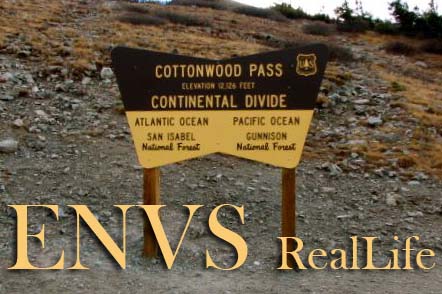After delivering the last batch of those nifty little booklets, it seem appropriate to leave anyone who happens to care enough to go nab a few with a some handy little statistics. And, although these are fairly accurate (there are a few math idiosyncrasies that I didn't quite figure out, as I can't account for somewhere around 20 pamphlets), it is handy to remember Mark Twain's wise statement that "There are three kinds of lies: lies, damn lies, and statistics." On that note, here are those statistics, and, though I do like that quote, they are not overwhelmingly inaccurate.
Locations of ORE Pamphlet Stashes and
Delivery Amounts as of 5/4/13 and 5/6/13
On Western’s Campus
Kelley Hall:
Main Recycle Bins:
-
4x EnergySmart + 1=5x
-
7x ORE Information +3=10x
-
6x Local Farms First
-
10x EnergyWise
-
4x Pocket Guide to Energy Efficiency
-
7x Green Business Directory
Student Room:
-
6x Green Business Directory
-
2x Local Farms
First
-
5x EnergyWise
-
4x EnergySmart +1=5x
-
3x ORE Information +2=5x
-
2x Pocket Guide to Energy Efficiency
Downstairs Table #2:
-
2x Green Business
Directory 4x?
-
0x Local Farms First
-
4x EnergySmart +1=5x
-
4x ORE Information
5x?
-
5x EnergyWise
-
1x Pocket Guide to Energy Efficiency
Upstairs Table #1:
-
0x Green Business Directory
Upstairs Table #2:
-
0x Green Business
Directory 5x?
-
4x ORE Information
Upstairs Table #3:
-
2x Green Business Directory
Taylor Hall Downstairs:
Recycle
Bins #1:
-
0x ORE Information
+ 5 = 5x
-
3x Green Business
Directory
Recycle
Bins #2:
-
4x ORE Information
+ 1 = 5x
-
3x Green Business
Directory
Leslie J. Savage Library:
Main
Table:
-
2x Green Business
Directory + 1 = 3x
-
9x ORE Information
+ 1 = 10x
-
3x Pocket Guide to
Energy Efficiency
-
8x Local Farms
First + 2 = 10x
-
10x EnergySmart
-
10x EnergyWise
College Center:
Main
Booklet Table:
-
20x ORE Information
-
4x Green Business
Directory + 1 = 5x
-
15x EnergySmart + 5 = 20x
-
23x EnergyWise
-
1x Local Farms
First + 2 = 3x
-
10x Pocket Guide
to Energy Efficiency
Freecycle (Undetermined):
-
7x Green Business
Directory
-
9x Pocket Guide to
Energy Efficiency
-
5x ORE Information
-
3x Local Farms First
-
5x EnergySmart
-
5x EnergyWise
Around Gunnison
Natural Foods Market:
-
3x Green Business
Directory + 2 = 5x
-
5x EnergySmart
-
5x EnergyWise
-
6x ORE Information
+ 1 = 7x
-
3x Pocket Guide to
Energy Efficiency
Mocha’s:
-
5x Green Business
Directory
-
5x ORE Information
-
3x Local Farms
First + 7 = 10x
The Bean:
-
7x Green Business
Directory
-
7x ORE Information
+ 3 = 10x
-
4x Pocket Guide to
Energy Efficiency
-
17x EnergyWise
-
4x EnergySmart + 1 = 5x
-
1x Local Farms
First + 14 = 15x
PawsAbilities Thrift Store:
-
5x Green Business
Directory
-
5x ORE Information
-
5x Local Farms First
Brick Cellar (undetermined):
-
9x Green Business
Directory
-
10x Local Farms
First (undetermined)
-
10x EnergyWise
(undetermined)
-
10x EnergySmart
(undetermined)
-
10x ORE
Information (undetermined) +9x
-
3x Pocket Guide to
Energy Efficiency
Mario’s Pizza:
-
5x ORE Information
-
2x Pocket Guide to
Energy Efficiency
-
4x Local Farms
First + 6 = 10x
-
8x EnergySmart + 2 = 10x
-
9x EnergyWise
-
2x Green Business
Directory
Of all of these pamphlets, Local Farms First was undoubtedly the most popular. The Green Business Directory and the Pocket Guide to Energy Efficiency were also reasonably well-received, and ORE's informational booklet did alright. EnergySmart and EnergyWise weren't very popular at all, however, which leads me to believe that some people actually like exorbitant electricity bills. Or, better yet, maybe people just like looking those programs up on the computer, instead of taking actual booklets, so that they can use even more electricity. Who knows. Anyway, as near as I can tell, the total number of ORE pamphlets that delivered is around 725. A few of these booklets were already there when I came along, but the vast majority were hand-delivered by me. My roommate also deserves some credit, as he occasionally tagged along for a bit of camaraderie-inspiring conversation. I also have a few pages worth of the total numbers of booklets that were delivered and actually taken from all of those different places, although I don't want to usurp this blog's entire first page with more mumbo-jumbo sort of interesting records. So, if you are one of those readers who actually likes picking up pieces of paper instead of staring at websites, or, better yet, even if you are someone who gets off on all those nifty little Macintosh gizmos, please take a moment to forget about the ridiculousness of the "21st century" and pick up a few booklets if you haven't already. Also, for anyone who reads this blog next semester, you to are more than welcome to cruise around town or around campus and read a few of 'em, too, so please do!

